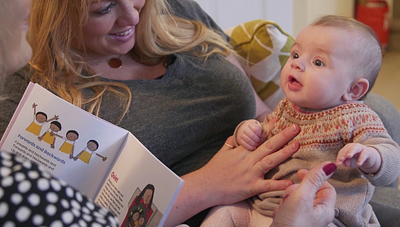All good things come in threes. Three kittens lost their mittens, Goldilocks and the Three Bears, The Three Musketeers, Three Billy Goats Gruff. There are three little pigs, not four. You might even say ‘three is a magic number’. But why?
The rule of three suggests that words grouped into threes are more appealing and easier to remember. It seems that three is the smallest number needed to create a pattern and it can make makes stories and songs more satisfying – and funnier. Three is the perfect combination of brevity and rhythm.
Information presented in a group of three sticks in our head better so children are more likely to remember it. The first time you hear it –you start listening. The second time you hear it – you start listening properly because you know it is important and the third time confirms you heard what you thought you heard.
Everyone knows that stories must have three elements: a beginning, middle and end. The rhythm of the day has three parts – morning, noon and night – with three meals a day too – breakfast, lunch and tea. The rhythm of growing towards adulthood has three stages: baby, child and teen.
And most of the lullabies, songs and nursery rhymes told and sung from childhood are built upon the rhythm of the magical number three, so it is no accident that the number three is central to some of our greatest nursery songs and rhymes. For example, Baa, Baa Black sheep – three ‘B’s and then wool for three people: the master, the dame and little boy in the lane.
Alliteration, when a series of words begin with the same sound, is often linked with the rule of three. This can help children hear the sound and then practise joining in. Here are some examples:
- 5 Fat Peas in a Pea Pod Pressed
- Rickey Rickety Rockety Horse
- Wee Willie Winkie.
Sometimes a word is repeated three times to demonstrate how important it is, and to add to the rhythmic effect:
- Row, Row, Row your boat
- Zoom Zoom Zoom we’re going to the moon
- Miss Polly had a Dolly who was sick, sick sick
Sometimes a phrase is repeated three times:
- Here we go round the mulberry bush, the mulberry bush, the mulberry bush
- The wheels on the bus go round and round, round and round, round and round
- Three craws sat upon a waw, sat upon a waw, sat upon a waw
- Creeping creeping creeping goes the little cat
This repetition offers the child the opportunity to tune into words a second and third time and helps them remember what they have just heard. Repetition can also help children to become aware of the individual units of sound, known as phonemes, which make up words - something that does not happen in every day speech. Understanding how these individual sounds can form words is a key part of the process of learning to read and spell.
What is the appeal of wanting to experience something again and again? It is human nature to repeat things we enjoy and it contributes to a child’s sense of security.
Children delight in repetition because whatever the activity is, it becomes a part of their memory and they learn to anticipate the details of the song and rhyme or story – that is the fun part! When they know what is coming next, they are the leaders of that activity and take great satisfaction in their accomplishments.
So three cheers for the rhythm of three: Hip, Hip Hooray, Hip Hip Hooray, Hip Hip Hooray!
